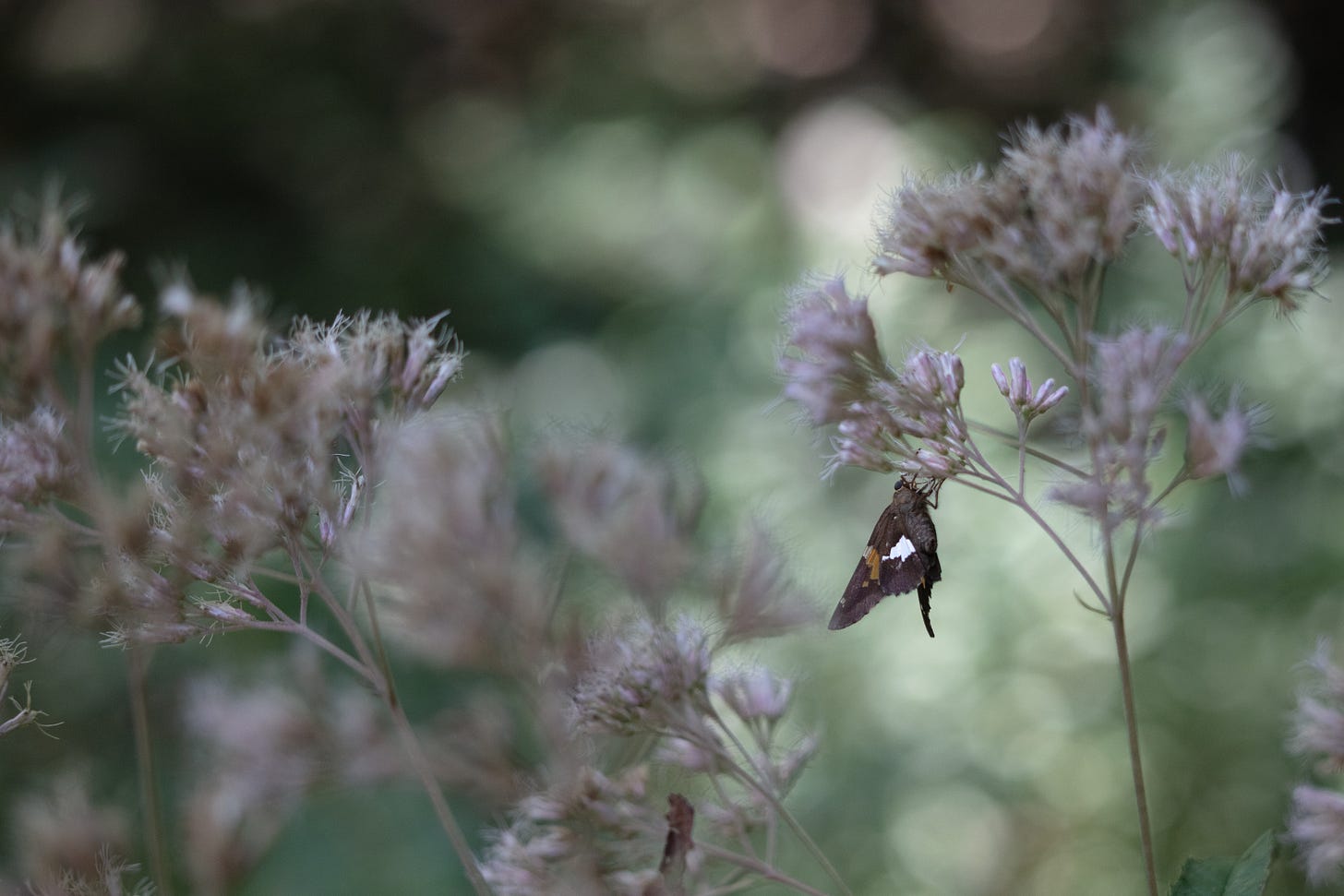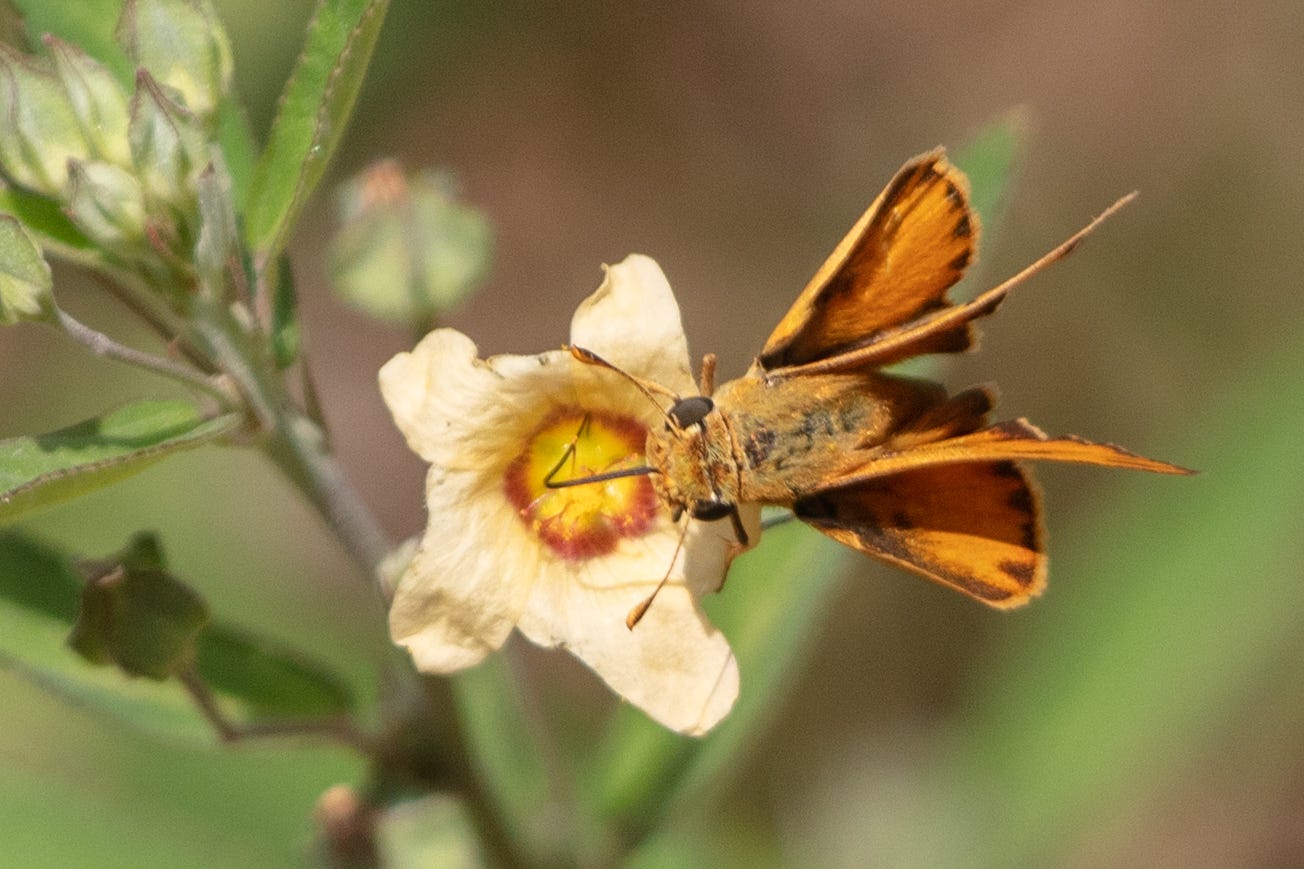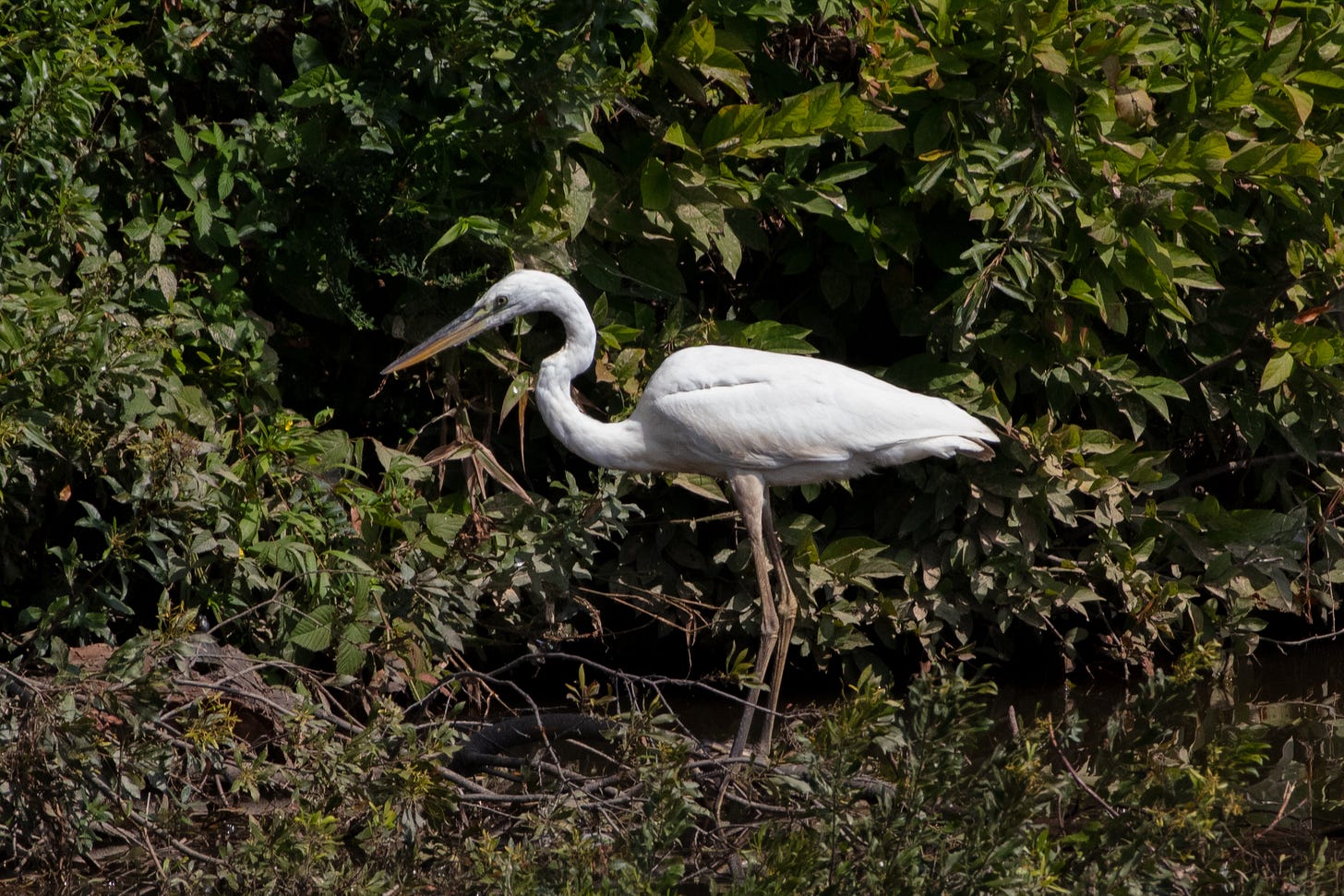Early Signs of Fall
The beginnings of bird migration, a visit to a new spot, and a rare bird sighting

Even with afternoon temperatures in the 90’s, autumn approaches. Fall migration has arrived, bringing a variety of shorebirds to ponds and farm fields, and early migrating songbirds are seeking respite in Atlanta-area parks and yards.
For a couple of hours after sunrise, the back garden is pleasant — cool and relatively free of biting mosquitoes. Sometime after 9am, the still, cool air gives way to the movement of tiny wings, and I start to see their small forms land on my hands and on the dog, sticking their proboscises into our skin before I can shoo them away.
This morning, I stood on the damp porch watching hummingbirds zipping around the plum tree, trying to see if the feeder needed to be refilled. At least four hummingbirds looped and swooped in the air around the plum tree, up towards the elm tree, somewhere behind me, before rounding back over the driveway, down past the wafer ash tree, and back to the plum tree.
Clear drops of last night’s rain lined the tree’s branches, catching the sunlight like beads of crystal. One hummingbird dipped low into the tree’s foliage and came to rest on a thin, red branch. With its back to me, the small green bird resembled a shiny plum leaf. The white tips of its tail feathers, lit by sunlight and hanging just below the branch, resembled drops of rain water. If I had not seen the bird land, I may have mistaken it for part of the tree.
The hummingbird gazed at the feeder, just inches away, but occupied by a red paper wasp. “Soldier fairy in copper armor,” I muttered to myself. I am trying to train myself out of a mild dislike for these wasps, which is based in zero logic, only in their constant presence at the hummingbird feeders.
A flurry of noise and movement swept through the yard; birds I did not see and whose calls I had no time to identify flew behind the plum tree and the pokeweed. They either passed through to the other end of the yard or stayed hidden in the greenery. Loudly scolding, a single Carolina wren stood on the roof of the carport, staring at something below by the plum tree. Brown and cream feathers fluffed out, wings held slightly out from its sides as though waving its arms for emphasis, the wren let forth a long, loud, tirade of scolding.
Quiet followed the wren’s rant. Minutes into that silence, a trumpeting chorus drifted down from the sky; distance mellowed the honking of unseen Canada geese. Migration, I thought. It’s already here.
I took no photos of this morning’s scene, just words. What photos I want to share are from earlier this week when I visited Murphey Candler Park for the first time. I have few words about this visit, mostly just photos.
I have avoided this perfectly nice Brookhaven city park and eBird hotspot because it is north of the city and popular. Whenever I previously planned to check out Murphey Candler Park, I pictured a massive, overwhelming crowd on weekends; when I considered going on weekdays (such as before going to my office that is in the same county as this park), I would stare at the red lines of traffic on Google Maps and say, “Ugh, no thanks. I’ll just go to Legacy Park again.”
That was before I saw the Rare Bird Alert. Earlier this week, a Great White Heron, Ardea herodias ssp. occidentalis was sighted on the shores of the lake at Murphey Candler Park. According to some birders I spoke with, a Great White Heron was last seen in the state of Georgia in 2008. (According to another birder, this is an exaggeration, and I was reminded that there were eBird reports as recently as 2023, though I can’t remember if they were confirmed by eBird reviewers or not.)

Regardless, a Great White Heron is rare here. My very brief research suggests they are typically restricted to South Florida.1 Great White Heron is currently recognized as a subspecies of Great Blue Heron, Ardea herodias, which is a regular visitor to lakes and ponds of Atlanta and beyond. Some debate exists over whether or not it should be recognized as a separate species.2
I do not know why or how this individual Great White Heron got to metro Atlanta. But the heron is still here! As of this writing, the heron was reported at the same park less than two hours ago, so local readers may have a chance to see this bird (if they are not already regular refreshers of the Georgia Rare Bird Alert page, sorted by most recent, as I am.)
After taking a hundred nearly identical photos of the Great White Heron, I took a quick walk around the lake. Concern about crowds on weekends and traffic on weekdays has kept me from a perfectly nice park where I could have spent the summer photographing odonates and butterflies! But as with most things, we can only move forward and strive to do better in the future. Below are some more photos from my walk around the lake.
UPCOMING EVENTS
The Great Southeast Pollinator Census - August 23 & 24. If you are in Georgia, South Carolina, North Carolina, or Florida on those dates, you can participate by observing and counting the insects that visit a single plant for 15 minutes, and submitting your data to the count. (The linked website has more detailed instructions.) You can do this for as many plants and 15-minute intervals as you want.
Join the Great Georgia Pollinator Count iNaturalist Project to post your Georgia observations and photos from the count to iNaturalist.
The blog Using Georgia Native Plants has a good post about the Great Southeast Pollinator Census and cleaning up Joro spider webs. (My post/rant about Joro spiders will come eventually.)
Nature Walk and Pollinator Census - On Saturday, August 24th, the Georgia Native Plant Society is hosting an event at Legacy Park (one of my local birding places) for the Great Southeast Pollinator Census.
Bioblitz at Cochran Shoals - On Saturday, September 21st, NPS and Birds Georgia are hosting a Bioblitz at the Cochran Shoals Unit of the Chattahoochee National Recreation Area, a great spot to see migrating birds in September.
Sibley, David. “‘Great White’ Heron — not just a color morph.” Sibley Guides (Nov. 5, 2007) https://www.sibleyguides.com/2007/11/great-white-heron-not-just-a-color-morph/
Browning, M. Ralph & Kushlan, James A. “The Great White Heron is a species.” Journal of Heron Biology and Conservation, Volume 7, Article 1 (2022) https://www.heronconservation.org/jhbc/vol07/art01/ .










